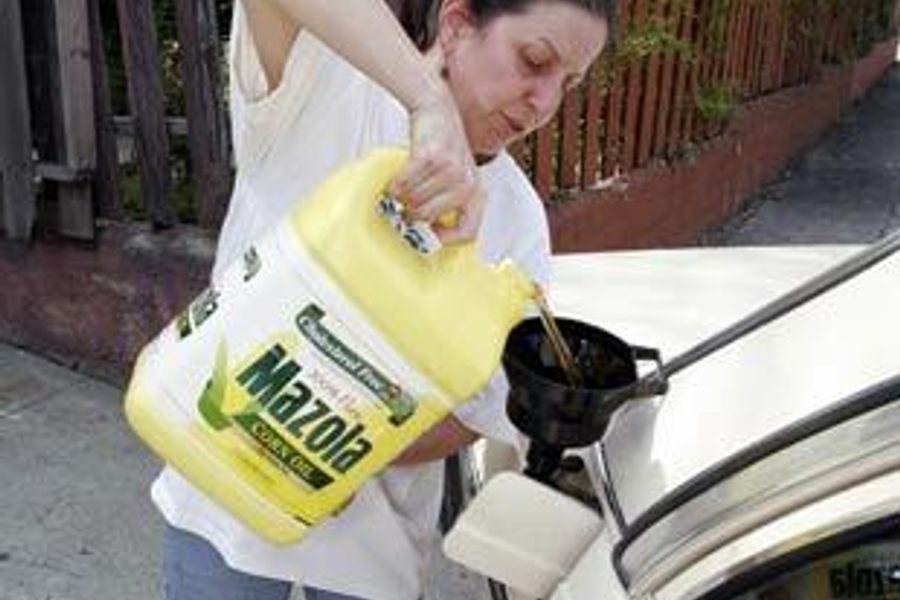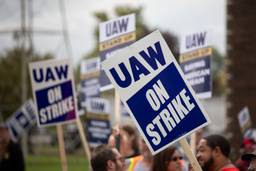
The following is an excerpt of an article first posted by The Center for Public Integrity.
ANACORTES, Washington — From 500 yards away, John Moore felt the concussion before he heard it.
Moore was midway through a 6 p.m.-to-6 a.m. shift as an operator at the Tesoro Corporation’s oil refinery in Anacortes, an island town 80 miles north of Seattle. It was 35 minutes after midnight on April 2, 2010.
Up the hill from Moore, in the Naphtha Hydrotreater unit, seven workers were restoring to service a bank of heat exchangers — radiator-like devices, containing flammable hydrocarbons, that had been gummed up by residue and cleaned. Most of the workers didn’t need to be there; it was, for them, a training exercise.
Moore was monitoring the job by radio. “They were maybe two-thirds of the way to putting the bank online when I heard a noise from outside,” he said. “I felt a tremendous vibration in my feet,” followed by the whooshing sound of “a match hitting a barbecue.”
Exchanger E-6600E, part of a bank that had kept running while the other one was down, had come apart and disgorged hydrogen and a component of crude oil called naphtha, which ignited. Moore called each of the seven workers on the radio and got no response. Thirty or 40 seconds later he heard the strained voice of the crew’s foreman, Lew Janz. “Lew said, ‘Get someone up here. We’re all dying.’”
Members of the refinery’s first-responder team raced to the unit. They sprayed water on flaming, mangled equipment and burning bodies, which reignited from the heat. Debris flew. The conflagration lasted until 4 a.m.
Three of the workers died at the scene. Two more succumbed to their injuries within hours. A sixth — Janz — survived 11 days, a seventh 22. The Washington State Department of Labor & Industries investigated and proposed a record fine against Tesoro, having found that it “disregarded a host of workplace safety regulations, continued to operate failing equipment for years, postponed maintenance [and] inadequately tested for potentially catastrophic damage.” The company has since settled lawsuits filed by the families of the seven workers but is still appealing the state citation.
In a written statement, Tesoro said that while it disagrees with the Department of Labor & Industries’ conclusions, this “does not alter our focus on continually learning from incidents and improving the safety of our operations.” Moore, now retired and in fragile health, takes a darker view. “They’ve fought everything tooth and nail,” he said, “and refused to take the blame for anything.”
There are 141 oil refineries in the United States. Where they are clustered — east and south of Houston, south of Los Angeles, northeast of San Francisco — they are prodigious sources of air pollution and inflict a sort of low-grade misery — rank odors, bright flares, loud noises — on their neighbors.
They also pose an existential threat, as evidenced by the more than 500 refinery accidents reported to the U.S. Environmental Protection Agency since 1994. The Anacortes disaster occurred five years after the BP refinery in Texas City, Texas, blew up, killing 15 workers and injuring 180. It came two years before a fire at the Chevron refinery in Richmond, California, sent a plume of pungent, black smoke over the Bay Area, and five years before an explosion at the ExxonMobil refinery in Torrance, California, nearly unleashed a ground-hugging cloud of deadly acid into a city of almost 150,000 people.
These episodes and others call into question the adequacy of EPA and U.S. Department of Labor rules that have been in place since the 1990s. The former is finishing an update, due out in early 2017, that critics say doesn’t do enough to safeguard the public; the latter is years away from floating a proposal to protect workers.
The U.S. Chemical Safety Board, an investigative body modeled on the National Transportation Safety Board, lists among its highest priorities upgrades to process safety — procedures that can help prevent industrial fires, explosions and chemical leaks. The board, which makes recommendations but has no regulatory authority, has investigated 15 refinery accidents in its 19-year history and just committed to an inquiry into a Nov. 22 fire at the ExxonMobil refinery in Baton Rouge, Louisiana, that injured six workers, four critically. It has issued 112 refinery-related recommendations, nearly half of which have not been adopted.
“Underlying so many problems in this industry is production pressure,” board member Rick Engler said. “Shutting down part or all of a major refining unit costs an enormous amount of money, so there are pressures not to do so from management.”
The board’s final report on Anacortes is an indictment of Tesoro’s safety ethos: The bank of heat exchangers on which Lew Janz, Daniel Aldridge, Matthew Bowen, Kathryn Powell, Darrin Hoines, Donna Van Dreumel and Matthew Gumbel were working had a “long history of frequent leaks and occasional fires” during startup, investigators found. Tesoro “did not monitor actual operating conditions” of two of the exchangers, including the badly degraded one that ruptured, “even though it would have been technically feasible to do so.”
Tesoro could have redesigned the exchangers and automated startup procedures — things it did after the fact — so the seven workers would not have been in peril, the board said.
Instead, Tesoro chose to tempt fate. It was a mindset former workers like Maria Redin had complained about for years.
“Very few people exercised their right to stop work because of peer pressure,” said Redin, who lives in Belcourt, North Dakota, and went by her married name, Maria Howling Wolf, in Anacortes. When she, an operator, would raise a concern, managers would “pat me on the head like a good little dog” and tell her not to worry.
Redin and her colleagues used to say they worked at “God’s favorite refinery,” a wry reference to the many close calls that somehow hadn’t ended badly. This run of luck expired at 12:35 a.m. on April 2, 2010, when Redin, who had just gone to bed, heard the explosion. “I automatically assumed it was the refinery,” she said. “You could see the fire from my house. I knew they were going to need help.”
Redin got dressed and drove her pickup truck to the main gate. Sent first to a break room where the seven workers’ belongings lay untouched, she next was dispatched to the bottom of the hill on which the Naphtha Hydrotreater unit was perched. Redin arrived by bicycle and went upstairs to an old control room. There she saw Matt Gumbel, a 34-year-old operator with whom she had worked. His eyelids had been burned off. His body smoldered.
“I didn’t even recognize him,” Redin said. “He was all swollen up and laying on the floor with a blanket over him. He was naked. He was cooked, literally cooked.”
Gumbel began talking. “He was telling me to tell his dad [Paul, who also worked at the refinery] he was fine. I said, ‘Matt, you’re not OK. You look like shit.’ He kind of laughed and said, ‘I know.’” The banter continued as paramedics tended to Gumbel and Redin held his hand. Eventually, it subsided. “I could tell he was going down,” Redin said.




